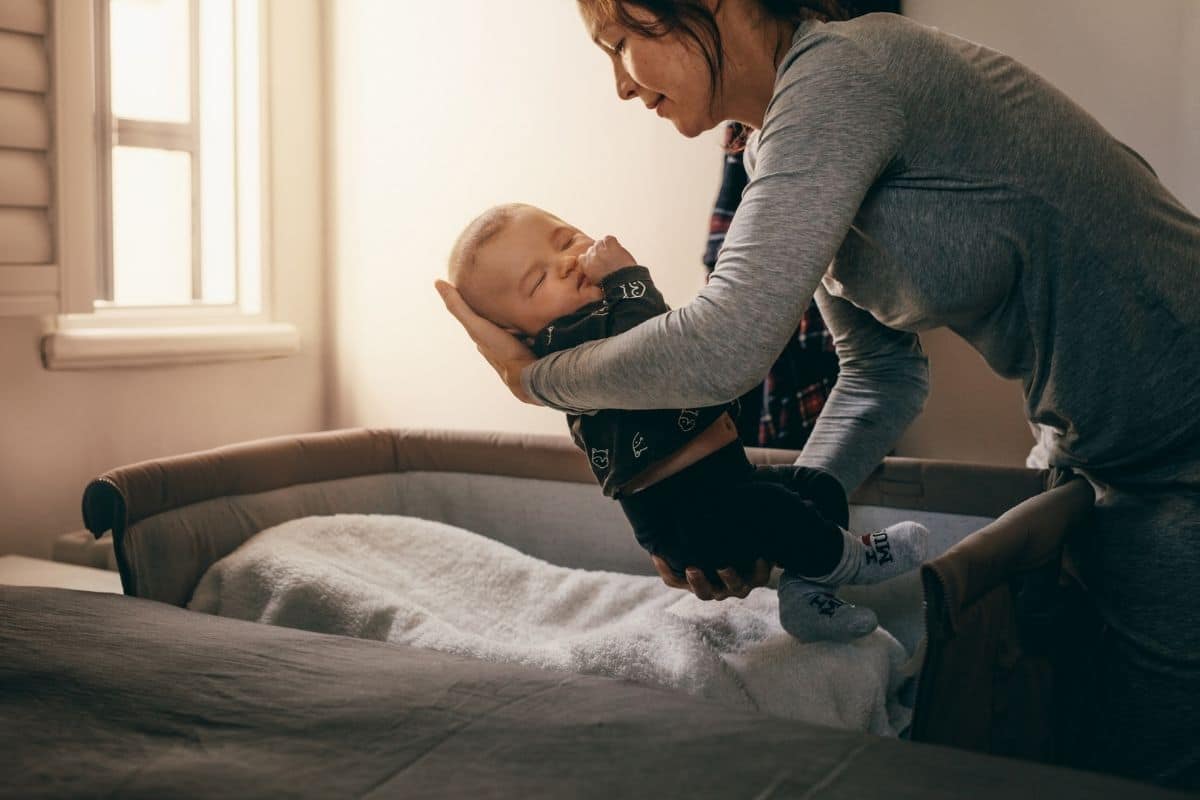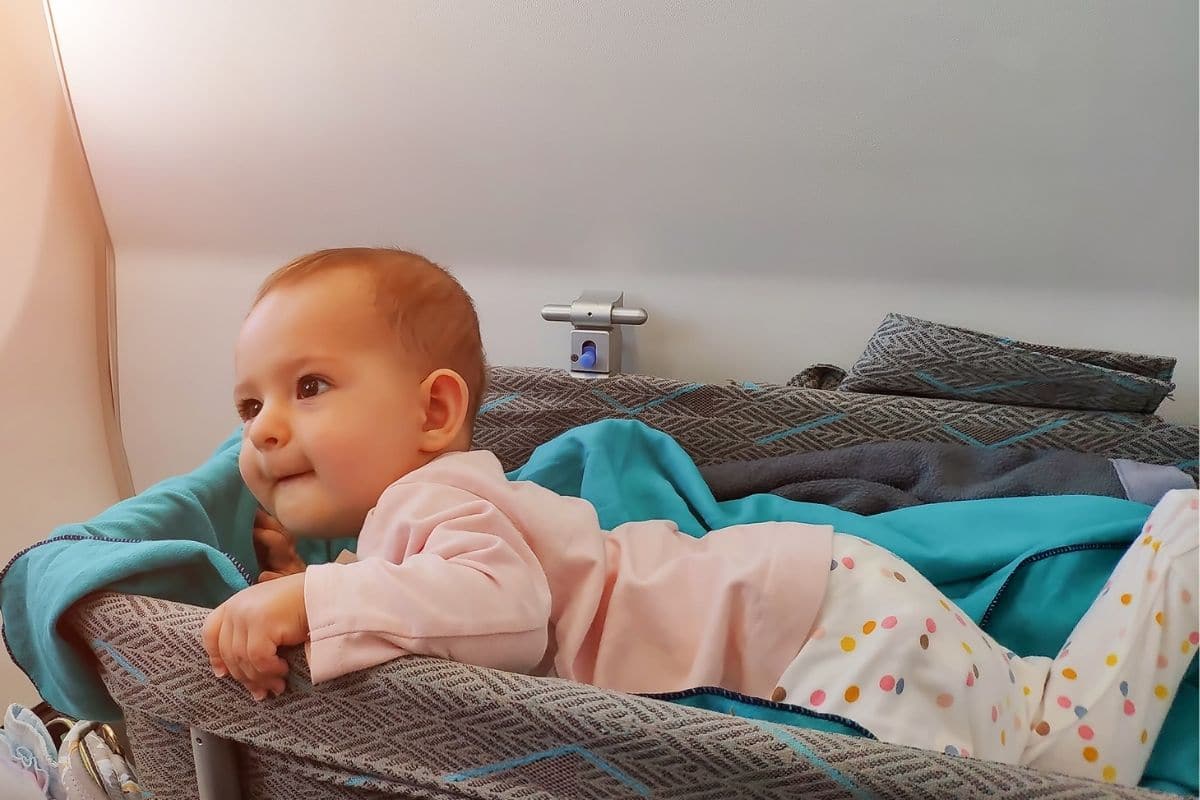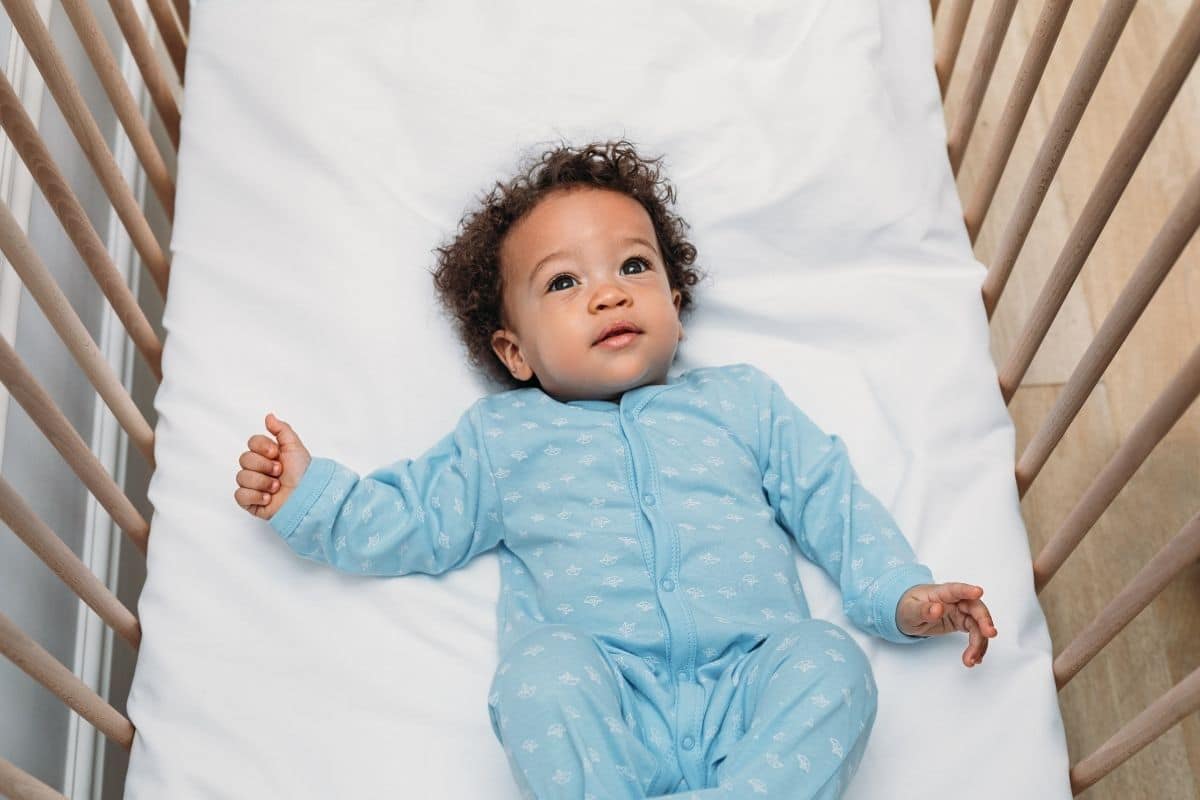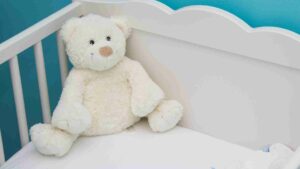If you are a new mother, or maybe you have just never used a bassinet before, you may be wondering when this small bed will be outgrown by your child.

A bassinet seems very temporary, and we know how quick babies can grow. So, does the baby outgrow a bassinet, or is there another reason?
Many people may actually misunderstand the main reasons why a baby moves out of a bassinet, but there are many reasons why a baby may move from one bed to another.
Where your baby sleeps can be really important and also can have a lot to mainly do with safety for their sake.
In this article we will explain the general reason why babies should move from bassinet to crib as well as some other less common reasons that may come up.
Hopefully, this article can help take some of the burdens off your mind as a first-time or inquisitive mother.
What Is A Bassinet?
A bassinet is a temporary sleeping place for a newborn baby. This is essentially the first place that your baby will sleep when you first get back from the hospital.
A bassinet provides a minimal and clean space for a newborn to sleep – a newborn baby should not sleep in your bed when they are this young.
The main purpose of a bassinet is to prevent cot death. This isn’t a particularly pleasant topic to discuss but is necessary to understand the point of a bassinet in comparison to a crib.
When your baby is a newborn they don’t yet have full control of their muscles. They can’t hold themselves up yet and they can barely sit up without our help. This will only come with time as they grow.
With a bassinet, the idea is that there are no sheets or pillows, just a taut blanket, perhaps if you live in a cold area.
If your baby were to sleep in a ‘normal adult bed’ then they could potentially turn into a blanket or simply furl themselves into a blanket by accident and not have the muscular or physical ability to make themselves comfortable again.
When a child is in a crib they have gained enough muscular strength and ability to make themselves comfortable when they need to, they will rarely get stuck in anything.
Unfortunately a good third of newborn deaths are a result of Sudden Infant Death Syndrome (SIDS) or what is commonly known as cot death.
Frankly, if you have a bassinet that isn’t full of blankets but is simply a minimal clean space that has the minimum your baby needs to be warm, then the likelihood of cot death is very low.
This is why mothers around the world use bassinets, to keep their baby safe.
Does A Baby Outgrow A Bassinet?

This is the main reason a baby would move from a bassinet to a crib. Many people actually misunderstand why.
The baby does not actually outgrow the bassinet, rather they simply out maneuver it.
Essentially, by around 5 months – 1 year your baby will have gained an ability to carry their own weight on their knees and hands.
This is what will eventually lead them to the crawling phase, and eventually the walking phase. This is totally great to see and is natural and necessary for when they actually walk.
However at this stage, if your baby can get up on their knees, or even hands and knees, they can now reach the perimeter of the bassinet.
This may seem great with their little faces poking over their bed into yours. But, this can be a cause of worry about their safety.
The main issue here is that your baby, if they wanted to, might be able to scramble over the edge of the bassinet.
Of course, this is not the best thing, especially if your baby gets wandering feet in the night, we don’t want them to fall in their attempts to escape – which is just natural curiosity, they aren’t misbehaving or anything.
Another safety concern if this happens is that your child could change the weight balance in the bassinet greatly if they are standing up or just crawling around.
Some bassinets just aren’t made to hold that weight imbalance – especially they are made for young babies to lay in, that’s about it.
Any imbalance in weight could possible lead the bassinet to fall over.
Behavior Which Indicates Baby Is Crib Ready
As we all will know, every child is different and each child will develop at totally different rates.
So to say that there is an exact time period where your baby should move would be misaligned with the nature of how each baby uniquely develops.
So here are some indicators when you can tell your baby is ready to move.
If your baby starts rolling onto their side then you should perhaps consider moving them. This is evident when they are literally on their side.
Similarly, if you find your baby is no longer parallel with the sides of the bed, that is to say, that they have moved themselves into a horizontal position, which is pretty common, you should move them to a crib.
The AAP (American Association of Pediatrics) recommends a baby should move into a crib by their 5th month, but some may show signs of needing to move earlier than this.
Other Reasons A Baby Might Move To A Crib

One common reason why a child might move to a crib earlier than others, so long as they are no longer at risk of cot death or SIDS, is that you simply may need the bassinet for another baby.
If you have had more than one child in quick succession, you may need the bassinet for another child.
For the same reasons explained before, relating to SIDS and cot death, two young or newborn babies should not ever sleep in the same bassinet or crib.
You can purchase dual bassinets or dual cribs too which have partitions for your babies to sleep safely.
Another reason you may want to move to a crib is if you have given birth to a heavy baby.
All babies, just like we do, come in many different shapes and sizes, so sometimes we should be ready to accommodate the larger babies.
You can get bassinets made specifically for larger babies as these have a higher weight limit. But it can also indicate that your baby should move to a crib.
If your baby starts to exceed the weight limit in the bassinet, this is another reason the bassinet could be left behind.
Moreover, your baby might not have come out larger but they may just be growing faster than other babies.
Your baby’s weight may begin to exceed the limit of the bassinet before they reach this stage where they can hold themselves up.
One product parents enjoy having, even for a newborn, or just for a baby that has a tendency to roll around, is an anti-roll mattress.
A mattress such as this one is inexpensive, can be used with multiple children, and it is your best defense against SIDS.
The ridges on the side stop the baby rolling over but keep them nice and warm and comfortable.
What To Look For In A Bassinet To Prevent SIDS
When buying a bassinet, it can be worth looking for certain features which can help prevent SIDS.
One thing to keep an eye out for are mesh sides.
These mesh sides can help with many things. Firstly, they provide an unimpeded view to your child so you can see when they may be turning over.
Mesh sides can also help with general airflow to your child when they are sleeping normally.
More importantly, these mesh sides are a lifesaver, literally, in some cases.
SIDS can often occur when the baby rolls onto their side, unaware they are making contact with the side of a bassinet while they are sleeping, potentially restricting airflow.
The mesh sides essentially stop this from happening.
Something to avoid is the bassinets that have a one way gradient. These gradients can encourage rolling if they only go one way.
The other side of this though is that you can get bassinets which have already an anti-rolling mattress inside. This is a really great feature.
If you find that your baby is heavier than average, or you find that they are growing quickly, it may be good to seek out a bassinet that has a higher weight limit.
Some bassinets can go up to 50 lbs to be super safe. This can depend on the frame and lots of things, but even in this case, your baby would still require moving once they can hold their weight.
Another simple feature is that most bassinets these days can double up as a bedside sleeper, meaning they can sleep next to your bed or technically on it without leaving the confines of their bassinet.
A bedside sleeper like this with detachable sides allows you quick access to your baby if you ever catch them in a compromising situation while they sleep.
Simply having some storage on the bassinet can be helpful as well. It can further remind you not to keep your sheets, pillows, toys, or burp cloths in there and gives you somewhere to keep them tidy and organized, away from your babies airwaves.
Final Words Of Advice
Of course, the idea of SIDS and cot death is something horrible and is something you shouldn’t let plague your mind as a mother.
So long as you are aware of the dangers and how to avoid them, and you take the necessary precautions, there is no reason why this should be a constant worry.
We would suggest being cautious when moving your baby into a crib. Our advice is to act a little earlier than you may think as this can give you the best protection against SIDS, to act before it happens.
But this also means not acting too early either, as this could be to your baby’s detriment.
If you think your baby is at risk of rolling over, consider buying an anti-rolling mattress first, but if it is close to around the five-month mark, looking for a suitable crib could be a good idea.
Using this mattress initially will help a lot with getting them used to the crib and the larger size without dangerously rolling over in their earlier days of the crib.
But the main take-home here is that your baby needs to move to a crib before they can dangerously roll over and create a possible risk of cot death.
But also, your baby will naturally gain the ability to stay on their feet and crawl at some point. This also means you should move them to a crib at this time as they can get out of a bassinet at this point.
SIDS is a scary and rather distasteful idea, but being aware of it, how to prevent it, as well as how it happens, is ultimately a mother’s best defense against SIDS.
But precaution should also be taken for the mother’s health by making sure she isn’t totally stressed out by the idea.
If you take the correct precautions there should be no reason to worry about cot death.
Frequently Asked Questions
- What Is The Weight Limit Of A Bassinet?Most bassinets, although not all, have specific weight restrictions, so always check product descriptions as well as what your own bassinet says. Bassinets will take up to around 15 lbs in weight before they are at risk of collapsing. A male baby could potentially exceed this within 5 months. Most female babies won’t but can. The average recommendation is that babies will generally reach around 15 lbs when they reach 5 months.
- What Is The Difference Between A Crib And A Bassinet?A bassinet is commonly only a temporary sleeping space, while a crib can last into early child years, technically. In essence, a bassinet is a very shallow cradle or cot where a baby can sleep and be retrieved from this bassinet with ease. A bassinet will commonly allow them to retrieve the baby with ease and allow the baby to sleep next to their bed, enabling them to keep an eye on them. A bassinet is made for a newborn, whereas a crib is made for a toddler.
- Can A Baby Wear Clothes In A Bassinet?This can depend on a number of things. Obviously normal clothes are fine. Alternatively, a onesie is a good option or something similar, as they are harder to take off. Sometimes you will find your baby with one arm out of their clothes. This is fine in most cases, so long as they can’t roll over. One thing a baby should definitely not have in bed is a hat or a beanie. It can certainly be easy to forget they have this on, so make sure to check before you place your baby in the bassinet. A hat or beanie could end up covering their face and lead to SIDS even when they can’t roll over.
- Can A Baby Sleep On Their Chest?Technically, yes. SIDS will occur when airways are blocked, and this could happen in numerous situations. However, a child can still sleep on their chest or side without the risk of SIDS. It just requires you to put them in that position. If your child has some form of respiratory problem, perhaps from the birthing process, your pediatrician may recommend that they sleep on their chest to aid breathing, but will also advise on how to do this while avoiding SIDS.
- What Is SIDS?SIDS refers to Sudden Infant Death Syndrome, which is when a newborn baby dies unexpectedly in the bassinet for a non medical reason. This means that a totally healthy baby with no pre-existing conditions, that doctors or parents are aware of, can die as a result of suffocation, entrapment, or strangulation. For instance if your baby died from climbing out of the bassinet, this wouldn’t technically be classed as SIDS or cot death. ‘Cot death’ is a colloquial term which refers to what is known in medical circles as SIDS. Around 3,500 babies die per year from SIDS and around one-third of all deaths below the age of 1 are due to SIDS.

Carly Link, a 33-year old mother of two toddlers. She is a parent and goes through a lot of the usual parenting difficulties herself. Carly shares all her experiences and knowledge about the best baby products through this blog.








